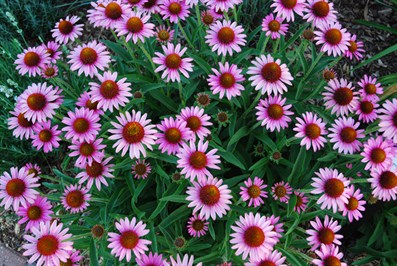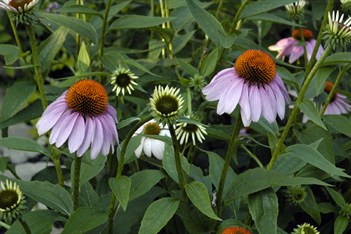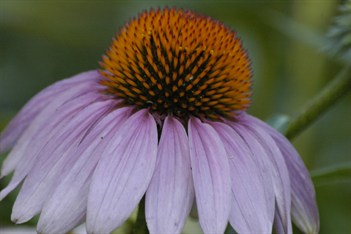...hanging on in another
It's a big continent, where plants fare differently across
regions
Check the USDA site for States beyond your own and you may be
surprised to see plants listed in one area that are common in
another. In Michigan we see carpets of spring beauty (Claytonia
virginica) in the woods, a species that is endangered in Massachusetts. Great blue
lobelia (L. siphilitica) and culver's root
(Veronicastrum virginicum) are not deemed to be in any
trouble in the Great Lakes States but the first is endangered in
Massachusetts, and the other threatened.
Once you know this, it can be startling to see what you know to
be an at-risk plant for sale at a garden center. For instance,
purple coneflower (Echinacea purpurea) is one of the basic
perennials stocked at garden centers all over the country, even in
Michigan where that species is extirpated -- gone way beyond
endangered to wiped out. The population of purple coneflowers that
was in Michigan when European settlers first arrived has probably
been completely lost. Any wild plants or seed involved in modern
production of those plants come from regions where the plant is not
in trouble.

In that example, the purple coneflowers you buy would not have
been collected in Michigan. They do not have the genes that were
particular to the Michigan portion of that species. (See genotype in our Scrabbling
department.)
There is some controversy about whether we may further endanger
an at-risk population when we plant what native plant
growers can supply us -- plants of that species that are not of
the local genotype. If the garden plants or their pollen escape to
the wild, they may introduce "foreign" characteristics that don't
suit local conditions or may further dilute an endangered gene
pool.


Images above: Purple coneflower (Echinacea
purpurea) has quite a bit of genetic diversity within its
species. So there are many local genotypes, varying in flower form,
height, bloom time and so on. Cultivated varieties -- cultivars --
abound. There is some concern among conservation specialist that
introducing pollen from these clones into a wild poulation could
dilute the local genotype.
Check around in your State or Province for more
detail about plants on the list. For example, from the
University of Michigan Herbarium website one can check by county where a given plant is reported
to be established.